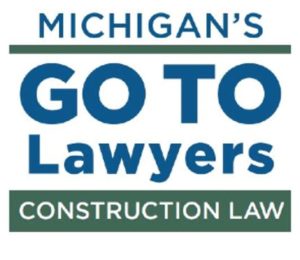On October 9, 2020, the Michigan Department of Health and Human Services (MDHHS) issued a new order implementing a number of statewide mandates in response to COVID-19. The order took immediate effect and remains in effect until October 30, 2020.
The order establishes a number of limitations on how many people may attend a gathering, including at residences, places of business, stores, and entertainment venues, as well as when face coverings and physical distance are required:
Businesses
While the MDHHS order, unlike recent executive orders, does not explicitly require workers whose work can be performed remotely to do so, it does state that workers may not congregate in the workplace unless doing so is “strictly necessary to perform [their] job duties.” If workers are present in their workplace, they must maintain six feet of distance from one another “where practicable.” Employees who are within six feet of other employees, or in a shared space, must wear face coverings unless exempt (described in more detail below).
Any employee who (i) is subject to a recommendation to isolate or quarantine consistent with CDC guidance; (ii) has been instructed to remain home by a health or public health professional; or (iii) is awaiting a COVID-19 test or results after having symptoms of COVID-19 must not be present in the workplace until cleared to by a professional or until one of the following conditions is met:
- 24 hours have passed since the employee had a fever without using fever-reducing medicine
- 10 days have passed since symptoms first appeared or since the employee took a test that was positive
- Other symptoms have improved
Employers must not require workers to gather with others in violation of this order.
Employers must provide a daily entry self-screening protocol for employees and contractors entering the workplace, including, at a minimum, a questionnaire covering symptoms of COVID-19 and suspected or confirmed exposure to people with possible COVID-19.
Residential Gatherings
Indoor gatherings of not more than ten people and outdoor gatherings of not more than 100 people may occur at a residence. Face coverings are not required, but are strongly encouraged.
Non-Residential Gatherings in General
Face coverings are required for all non-residential gatherings. The number of people allowed depends on the size of the venue and the activity being held. Indoor gatherings of more than 10 people and up to 500 people are permitted up to either 20% of the seating capacity (if the venue has fixed seating) or 20 people per 1,000 square feet in each room used for the gathering. Outdoor gatherings are permitted of up to 100 people or either 30% of a venue’s seating capacity or 30 people per 1,000 square feet (and in no case more than 1,000 people).
Specific Non-Residential Gatherings
- Stores, Libraries, and Museums may not have more than 50% of fire marshal occupancy limit in the premises at any one time.
- Gyms and other exercise facilities may not have more than 25% of fire marshal occupancy limit in the premises at any one time and at least six feet between each workout station.
- Waiting rooms at health care facilities, veterinary clinics, personal care services, and other businesses are prohibited unless the facility has a system in place to ensure that guests who are not members of the same household are placed at least six feet apart from one another (and such a policy should require patients to wait in their cars for their appointment to start).
- Sports and entertainment venues may not host events unless the venue is designed to ensure that guests who are not members of the same household maintain six feet of distance from one other.
- Gatherings at professional sports and entertainment facilities, including arenas, cinemas, concert halls, performance venues, sporting venues, and stadiums and theaters, are prohibited unless the venue is designed to ensure that patrons not of the same household maintain six feet of distance (e.g. stagger group seating upon reservation, close off every other row, etc.).
Businesses are responsible for ensuring that everyone required to wear a face covering does so. Businesses may not assume that a person who enters the facility without a face covering is exempt from doing so. Exemptions include young children (in certain circumstances, people who cannot medically tolerate face coverings, people who are eating or drinking while at food service establishments, people who are exercising outdoors and are able to maintain six feet of distance from others, and a number of other unique activities).
Rhoades McKee is continually monitoring legal developments related to COVID-19 and will keep you updated. In the meantime, should you have any questions about the new order issued by the MDHHS or other issues, please do not hesitate to contact a member of the Rhoades McKee COVID-19 Legal Response Team.
More Publications


